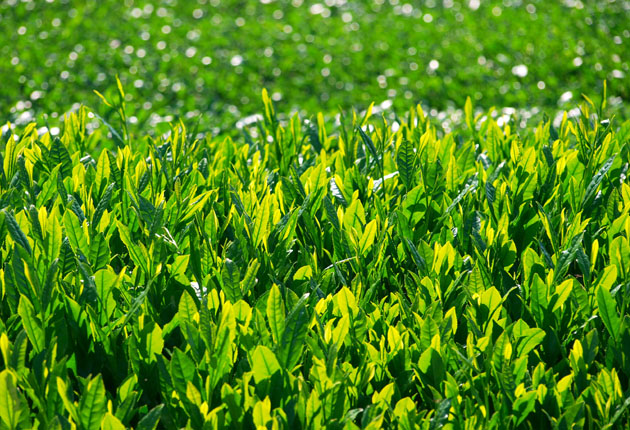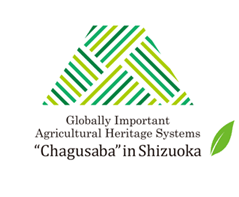


Shizuoka’s Traditional Tea-Grass Integrated System
Ancient wisdom for producing tea while preserving biodiversity




Shizuoka Prefecture is known widely as epitomizing the traditional landscape of Japan. The prefecture’s Traditional Tea-Grass Integrated System is a long-practiced agricultural production technique that preserves biodiversity. Recognized worldwide, it was designated as a GIAHS site in 2013.


The scenery of tea fields in Shizuoka is a quintessential image of the prefecture. If you come visit the tea plantations, you will notice that they are dotted with fields of grass. These fields are called chagusaba (which means “semi-natural grasslands”), where grass is grown to use as mulch for tea cultivation.
Shizuoka’s Traditional Tea-Grass Integrated System is an agricultural practice in which grasses such as Japanese silver grass and sasa broadleaf bamboo in chagusaba are cut and spread on the furrows of tea fields. This improves the soil environment by increasing the effectiveness of fertilizer, controlling weeds, and enhancing the soil’s ability to retain water, which in turn improves the flavor and aroma of tea.
Grass from chagusaba around the tea fields in Shizuoka is cut and spread on the furrows from autumn to winter.

In the summer chagusaba look like nothing more than fields of wild grass, but in the autumn the grass is cut to the ground, and you can see bundles of bound grass drying in the sun.


The areas within the dotted lines are chagusaba. As few places in Japan still practice this farming method, the scenery is unique to Shizuoka.

In the past, scenery like the chagusaba in Shizuoka could be seen everywhere across Japan. Farming villages used cut grass as fertilizer for crops, feed for horses and cows, and thatch for roofs.
Unfortunately, with the spread of modern agricultural practices, many of the semi-natural chagusaba areas which had been maintained by local villagers have been abandoned, and many of the plants and animals that had been growing in the grass fields are in danger of becoming extinct. But a number of tea growers in Shizuoka have preserved this labor-intensive practice of spreading grass in tea fields because it improves the quality of tea. Their commitment to this traditional method of tea production has helped preserve the environment of the grass fields in satoyama (semi-natural landscapes maintained by local villagers), which are gradually disappearing in Japan. Species such as rare, endangered plants, and grasshoppers that can only be found in chagusaba, still inhabit the chagusaba areas.


■Chagusaba—Where You Can Experience the Traditional Landscape of Japan



Shizuoka Prefecture is home to picturesque tea fields that are cultivated and maintained throughout all four seasons thanks to the prefecture’s mild climate. Visitors that come from other parts of Japan and around the world are amazed by the breathtaking scenery. Created by tea growers, tea fields are part of the beautiful landscape of Japan.


Shizuoka’s Traditional Tea-grass Integrated System preserves biodiversity and produces some of the highest quality tea in Japan. By traveling through the tea fields where the system is practiced, you can see some of Japan’s most iconic landscapes and enjoy the best tea in the country.


